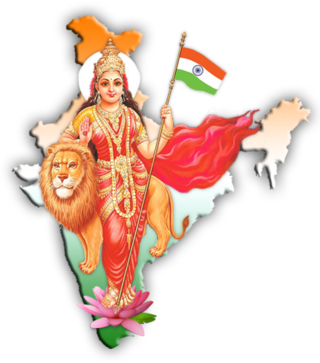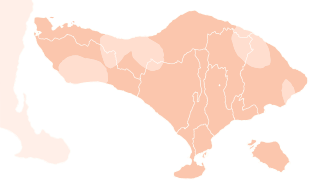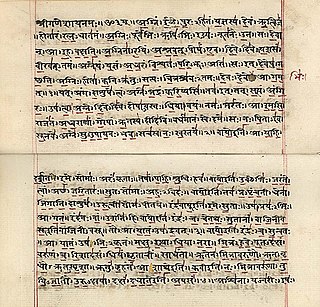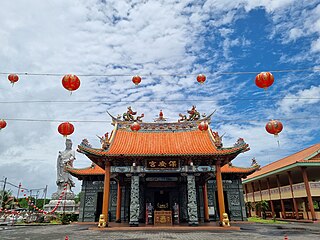An editor has nominated this article for deletion. You are welcome to participate in the deletion discussion , which will decide whether or not to retain it. |
This is a list of Sanskrit mottoes of non-educational institutions, including but not limited to, in the nations in Indosphere which were historically Indianized as part of Greater India. This list specifically excludes educational institutions which have Sanskrit phrases as their mottoes. See also Symbolic usage of Sanskrit.
| Institution | Motto (in Devanagari) | Motto (in transliteration) | Meaning |
|---|---|---|---|
| Republic of India | सत्यमेव जयते [2] | Satyameva Jayate | Truth alone triumphs |
| Supreme Court of India | यतो धर्मस्ततो जयः [3] | Yato Dharmas-Tato Jayaḥ | Whence dharma, thence victory |
| Archaeological Survey of India | प्रत्नकीर्तिमपावृणु | Pratnakirtimapāvrinu | Let us uncover the glory of the past |
| National Security Guard | सर्वत्र सर्वोत्तम सुरक्षा | Sarvatra sarvottama surakṣā | Omnipresent omnipotent security |
| Maharashtra | प्रतिपच्चंद्रलेखेव वर्धिष्णुर्विश्व वंदिता महाराष्ट्रस्य राज्यस्य मुद्रा भद्राय राजते [4] [ circular reference ] | Pratipaccandralēkhēva vardhiṣṇurviśva vanditā mahārāṣṭrasya rājyasya mudrā bhadrāya rājatē | The glory of Maharashtra will grow like the first day moon. It will be worshipped by the world and will shine only for the well being of people. |
| Brihanmumbai Municipal Corporation | यतो धर्मस्ततो जयः [5] | Yato Dharmas Tato Jayaḥ | Whence dharma (Righteousness), thence victory |
| Goa | सर्वे भद्राणि पश्यन्तु मा कश्चिद्दुःखभाग्भवेत् [6] | Sarve Bhadrāni Paśyantu Mā Kaścid Duhkhabhāg bhavet | May all perceive good, may not anyone attain unhappiness |
| Life Insurance Corporation of India | योगक्षेमं वहाम्यहम् [7] | Yogakshemam Vahāmyaham | I shall take care of welfare |
| Indian Navy | शं नो वरुणः [8] | Shanno Varuna | May Varuna be peaceful to us |
| Indian Air Force | नभः स्पृशं दीप्तम् [9] | Nabhaḥ-Spṛśaṃ Dīptam | Touch the sky with glory. |
| Maharashtra Police | सद्रक्षणाय खलनिग्रहणाय [10] | Sadrakshanaaya Khalanigrahanaaya | For protection of the good and control of the wicked |
| Institute of Chartered Accountants of India | य एष सुप्तेषु जागर्ति [11] | Ya Esha Suptéshu Jāgarti | One who is awake when all asleep |
| Indian Coast Guard | वयं रक्षामः [12] | Vayam Rakshāmaha | We protect |
| All India Radio | बहुजनहिताय बहुजनसुखाय [13] | Bahujana-hitāya bahujana-sukhāya | For the benefit of all, for the comfort of all |
| Rajputana Rifles | वीरभोग्या वसुन्धरा [14] | Veerabhogyā Vasundharā | The earth is fit to be ruled by the brave |
| India Meteorological Department | आदित्यात् जायते वृष्टिः [15] | Ādityāt jāyate vṛṣṭiḥ | The Sun Gives Rainfall |
| Doordarshan | सत्यं शिवं सुन्दरम् [16] | Satyam Shivam Sundaram | Truth is God and God is beautiful |
| Intelligence Bureau | जागृतं अहर्निशम् [17] | Jāgratam aharnisham | Wide awake day and night |
| Research and Analysis Wing | धर्मो रक्षति रक्षितः [18] | Dharmo Rakshati Rakshitah | Dharma saves its saviour |
| Uttar Pradesh Police | परित्राणाय साधूनां विनाशाय च दुष्कृताम् [19] | Paritrānāya sadhünām vināshāya ca dushkrtām | For the upliftment of the virtuous and the destruction of the wicked |
| Defence Research and Development Organisation | बलस्य मूलं विज्ञानम् [20] | Balasya mülam vijnānam | Knowledge is power |
| Indian Statistical Institute, Kolkata | भिन्नेष्वैक्यस्य दर्शनम् [21] | bhinneṣvaikyasya darśanam | Even in differences, see the unity |
| University of Mysore | न हि ज्ञानेन सदृशं [22] | Na hi jnānena sadriśham | Nothing is comparable to knowledge |
| Indian Institute of Management, Kozhikode | योगः कर्मसु कौशलम् [23] | Yogah karmasu koushalam | To do a skillful work is a virtue |
| National Council of Educational Research and Training (NCERT) | विद्यया अमृतमश्नुते [24] | Vidyayā amrutamashnuté | Immortality through knowledge |
| Indian Institute of Technology Bombay Mumbai | ज्ञानम् परमम् ध्येयम् [25] | Jñāna parm dhyēya | Knowledge is the supreme aim |
| Indian Institute of Management, Bangalore | तेजस्विनावधीतमस्तु [26] | Téjasvi nāvadheetamastu | May the shining one (the Sun, metaphor for God) illumine our intelligence |
| University of Delhi | निष्टा धृतिः सत्यम् [27] | Nistā dhrutih satyam | Truth is borne by faith |
| Banaras Hindu University | विद्यया अमृतमश्नुते [28] | Vidyayā'mritamașnute | Knowledge imparts immortality |
| Income Tax Department | कोष मूलो दण्ड: | Kosha Mulo Dandah: | Penalty is the Fundamental of Treasury |
| Government Engineering College, Thrissur | योगः कर्मसु कौशलम् | Yoga Karmasu Kaushalam | Perfection in skill through practice |
| Jharkhand Raksha Shakti University | ज्ञानम् विज्ञान-सहितम् | Gyanam Vigyan Sahitam | The Essential Knowledge attended with all the comprehensive Knowledge |
| Indian Institute of Technology Goa Archived 2021-04-10 at the Wayback Machine | विद्या विनयेन दीप्यते | Vidya vinayena deepyate | Knowledge Shines with humility |
This section needs additional citations for verification .(March 2020) |
| Institution | Motto (Official Indonesian transliteration) | Motto (Sanskrit) | Meaning |
|---|---|---|---|
| Ministry of Foreign Affairs | Caraka Bhuwana [29] | चरक भुवन | Charaka: "Wanderer" [30] and Bhavana: "Dwelling" [31] (referring to the World), literally "envoy of the nation to the world" |
| Ministry of Finance | Nagara Dana Rakça [32] | नागर धन रक्षा | Guardian of State Finance |
| Public Prosecution Service | Satya Adhi Wicaksana [33] | सत्य अधि विचक्षण | Satya: "Honest Loyalty", Adhi: "Perfection in Duty", and Wichaksana: "Wise" [34] |
| Supreme Court | Dharmmayukti [35] | धर्म युक्ति | (the) Real Dharma |
In Indonesia, Sanskrit is mostly and widely used in mottoes and terms in the Armed Forces, educational and government institutions respectively.

Garuda is a Hindu deity who is primarily depicted as the mount (vahana) of the Hindu god Vishnu. This divine creature is mentioned in the Hindu, Buddhist and Jain faiths. Garuda is also the half-brother of the Devas, Gandharvas, Daityas, Danavas, Nāgas, Vanara and Yakshas. He is the son of the sage Kashyapa and Vinata. He is the younger brother of Aruna, the charioteer of the Sun. Garuda is mentioned in several other texts such as the Puranas and the Vedas.

Bharat Mata is a national personification of India (Bharat) as a mother goddess. Bharat Mata is commonly depicted dressed in a red or saffron-coloured sari and holding a national flag; she sometimes stands on a lotus and is accompanied by a lion.

Hinduism in Southeast Asia had a profound impact on the region's cultural development and its history. As the Indic scripts were introduced from India, people of Southeast Asia entered the historical period by producing their earliest inscriptions around the 1st to 5th century CE. Today, Hindus in Southeast Asia are mainly Overseas Indians and Balinese. There are also Javanese and Balamon Cham minority in Cambodia and south central Vietnam who also practice Hinduism.

Balinese is a Malayo-Polynesian language spoken by 3.3 million people on the Indonesian island of Bali, as well as Northern Nusa Penida, Western Lombok, Eastern Java, Southern Sumatra, and Sulawesi. Most Balinese speakers also use Indonesian. The Bali Cultural Agency estimated in 2011 that the number of people still using the Balinese language in their daily lives on the Bali Island is under 1 million. The language has been classified as "not endangered" by Glottolog.

Balinese Hinduism is the form of Hinduism practised by the majority of the population of Bali. This is particularly associated with the Balinese people residing on the island, and represents a distinct form of Hindu worship incorporating local animism, ancestor worship or Pitru Paksha, and reverence for Buddhist saints or Bodhisattava.

The Bhagavata Purana, also known as the Srimad Bhagavatam, Srimad Bhagavata Mahapurana or simply Bhagavata, is one of Hinduism's eighteen great Puranas (Mahapuranas). Composed in Sanskrit and traditionally attributed to Veda Vyasa, it promotes bhakti (devotion) towards Krishna, an avatar of Vishnu, integrating themes from the Advaita (monism) philosophy of Adi Shankara, the Vishishtadvaita of Ramanujacharya and the Dvaita (dualism) of Madhvacharya. It is widely available in almost all Indian languages.

Satya is a Sanskrit word loosely translated as truth or essence. It also refers to a virtue in Indian religions, referring to being truthful in one's thoughts, speech and action. In Yoga, satya is one of five yamas, the virtuous restraint from falsehood and distortion of reality in one's expressions and actions.

Hinduism is the third-largest religion in Indonesia, based on civil registration data in 2022 from Ministry of Home Affairs, is practised by about 1.69% of the total population, and almost 87% of the population in Bali. Hinduism was the dominant religion in the country before the arrival of Islam and is one of the six official religions of Indonesia today. Hinduism came to Indonesia in the 1st-century through Indian traders, sailors, scholars and priests. A syncretic fusion of pre-existing Javanese folk religion, culture and Hindu ideas, that from the 6th-century also synthesized Buddhist ideas as well, evolved as the Indonesian version of Hinduism. These ideas continued to develop during the Srivijaya and Majapahit empires. About 1400 CE, these kingdoms were introduced to Islam from coast-based Muslim traders, and thereafter Hinduism, which was previously the dominant religion in the region, mostly vanished from many of the islands of Indonesia.
Satya is a Sanskrit Concept in Indian religions that loosely translates into English as "Truth".
The Sanskrit revival is a resurgence of interest in and use of the Sanskrit language, both in India and in Western countries such as Germany, the United Kingdom, the United States and in many European countries..",

India and Indonesia established diplomatic relations in 1951. Both countries are neighbours, India's Andaman and Nicobar Islands share a maritime border with Indonesia along the Andaman Sea.

Awards and decorations of the Republic of Indonesia are both military and civilian awards for service and personal contributions to the Republic of Indonesia. According to the Constitution of Indonesia, Chapter III Article 15: "The President grants titles, decorations and other honors as regulated by Law".

The Delhi Republic Day parade is the largest and most important of the parades marking the Republic Day celebrations in India. The parade takes place every year on 26 January at Kartavya Path, New Delhi. It is the main attraction of India's Republic Day celebrations, which last for three days. The first parade was held in 1950, and it has been held every year since. The cultural pageant is a symbol of a diverse but united India.

Vihara Satya Dharma is a modern Chinese temple at Benoa Port, Bali. It is a temple of the Three teachings ("Tridharma") of Chinese folk religion, i.e. Buddhism, Taoism, and Confucianism. Furthermore, like the other Chinese temples in Bali, this temple also has an altar in its outdoor yard dedicated to Gods of Balinese Hinduism.

Dr. Satyanarayana Dasa is an Indian Gaudiya Vaisnava scholar and practitioner. Dasa is a polymath, holding a Ph.D. in Sanskrit from Agra University, a degree in Indian law from Agra University, a Bachelors of Technology in Mechanical engineering from the Indian Institute of Technology and a Masters of Technology in Industrial Engineering from the Indian Institute of Technology. Currently based in India at the Jiva Institute, which he founded, Dasa has published numerous books and original papers in the field of Gaudiya Vaisnavism including translations and commentaries on the Sat Sandarbhas. His honors include an award from the President of India in 2012. Dasa has been called a leading living practitioner-scholar of Jīva Gosvāmin.
This is a list of emblems or coat of arms used in Indonesia. Indonesia is divided into 38 provinces, and each province is divided into regencies (kabupaten) and cities (kota). There are 416 regencies and 98 cities. Each province, regency, and city has its own emblem.